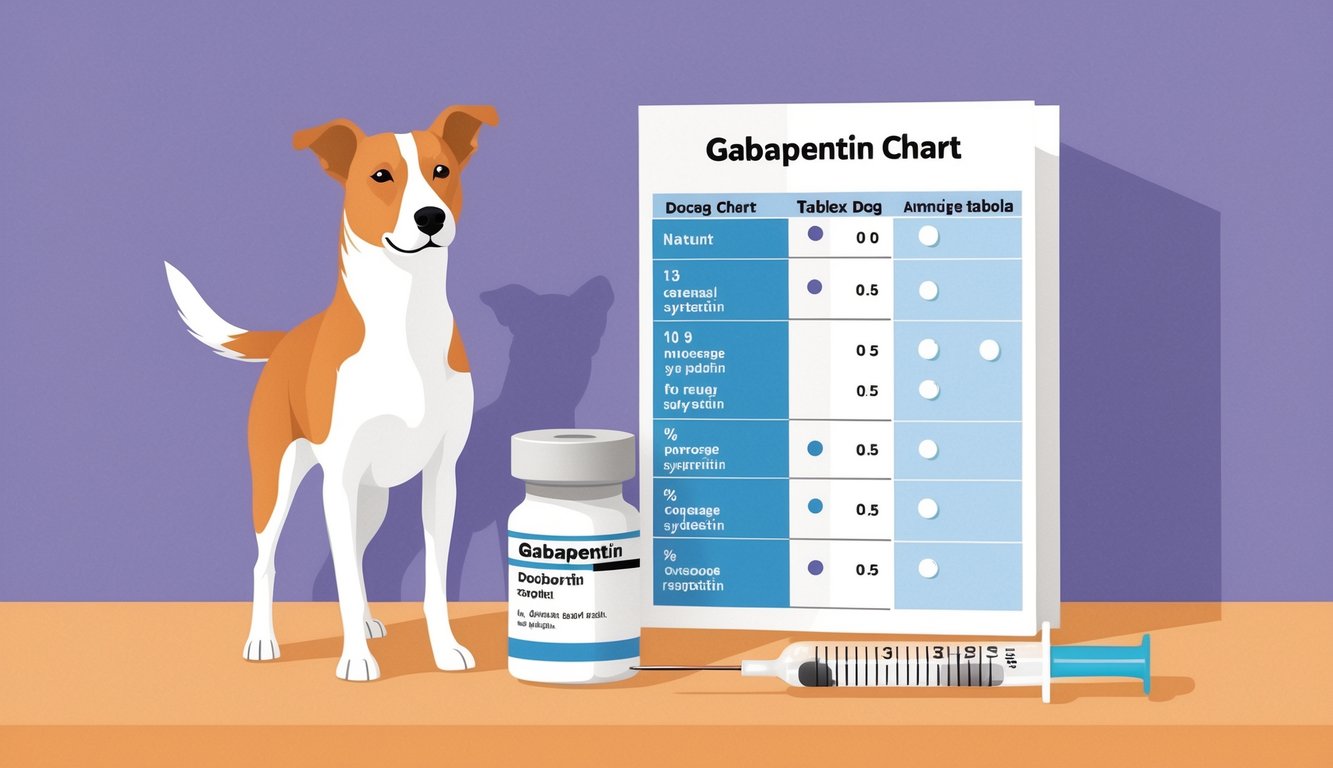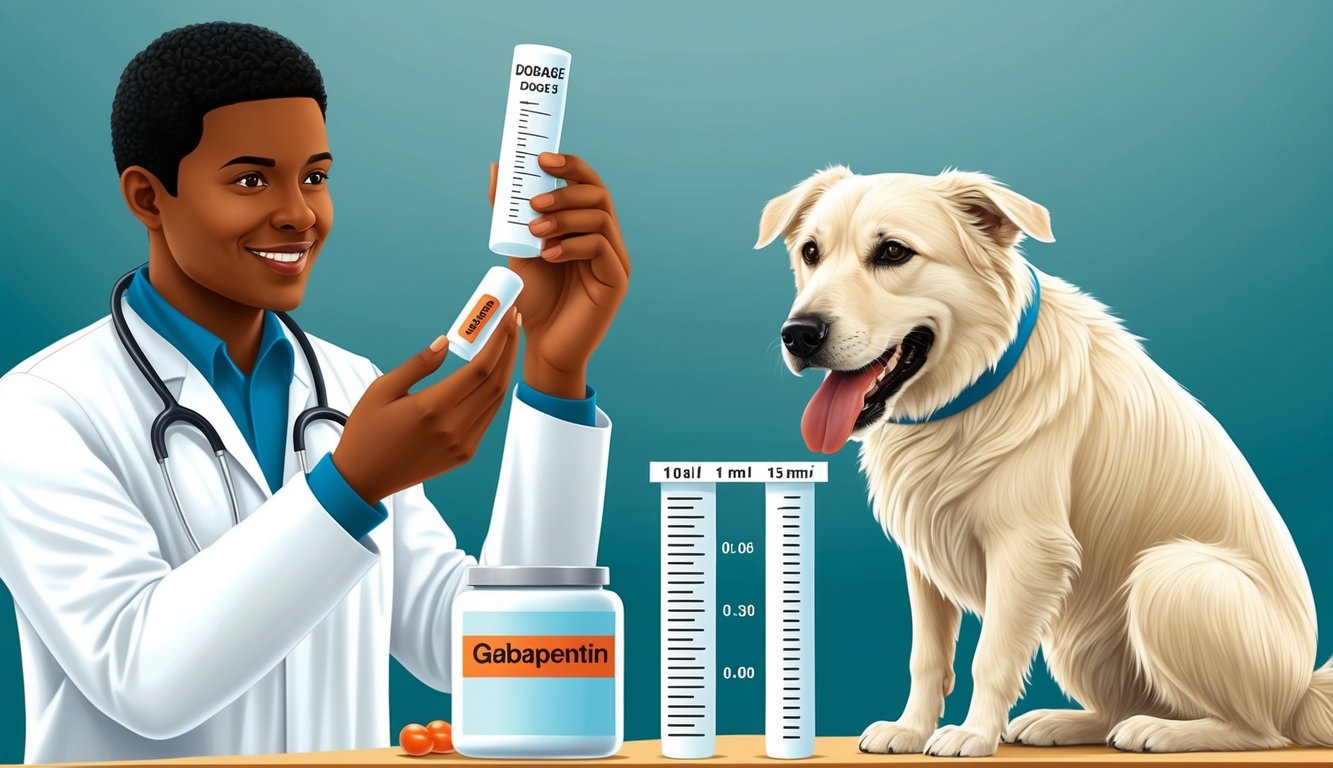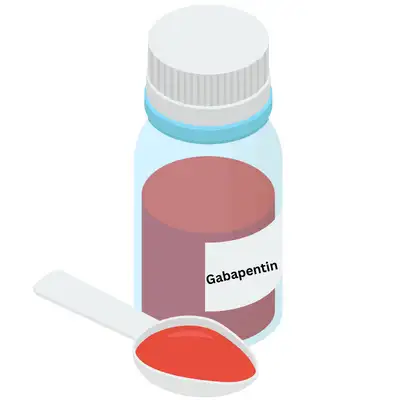If your furry friend is experiencing chronic pain or seizures, you might want to consider gabapentin. This medication is widely used for dogs to help manage pain, anxiety, and seizures. Understanding the proper gabapentin dosage for dogs is crucial to ensure their safety and well-being. By using a dosage chart, you can determine the correct amount based on your pet’s weight, making the process a lot easier.

Gabapentin works by calming overactive nerve impulses in the brain. This makes it an effective tool for managing different conditions in dogs. If you’re curious about how to use gabapentin for your pet, there are resources like a dosage calculator that can guide you. Remember, it’s important to follow your vet’s instructions when using this medication.
How much Gabapentin for Dogs?

When figuring out how much Gabapentin to give your dog, it’s important to base it on your dog’s weight and health condition. Typically, Gabapentin is used for pain, seizures, or anxiety in dogs. For pain relief, a common dose is around 5-10 mg/kg taken every 8 to 12 hours. If your dog is experiencing seizures, you might need to adjust the dose. Always check with your vet to make sure you’re giving the right amount.
There’s a helpful Gabapentin dosage chart you can use for guidance. If your dog needs a dose for anxiety, adjust according to the advice of a vet. Being careful with the dose helps keep your dog safe and comfortable.
Gabapentin for Dogs Dosage Chart By Weight
When giving your dog gabapentin, the dosage depends on their weight and medical needs. Here’s a handy table to guide you:
| Dog Weight in Kg | Dog Weight in lbs | Gabapentin for Seizures (mg) | Gabapentin for Pain (mg) | Gabapentin for Sedation (mg) |
|---|---|---|---|---|
| 2 kg | 4 lbs | 10-20 mg | 2-4 mg | 20-40 mg |
| 3 kg | 7 lbs | 15-30 mg | 3-6 mg | 30-50 mg |
| 4 kg | 9 lbs | 20-40 mg | 4-8 mg | 50-75 mg |
| 5 kg | 11 lbs | 25-50 mg | 5-10 mg | 50-75 mg |
| 6 kg | 13 lbs | 30-60 mg | 6-12 mg | 50-75 mg |
Remember to talk to your vet for advice, especially if your dog is very young or elderly. You can use this Gabapentin Dosage Chart for Dogs to help with safety. Use it as a guide to make sure you’re giving the right amount for your dog’s size.
Feel confident in caring for your furry friend!
Gabapentin Calculator For Dogs
Available Forms of Gabapentin
Gabapentin for dogs is available in oral capsules, tablets, and liquid forms. The capsules and tablets come in strengths of 100 mg, 300 mg, 400 mg, 600 mg, and 800 mg. The liquid form contains 250 milligrams per 5 milliliters (50 mg/mL).
Liquid Gabapentin for Dogs

When considering liquid Gabapentin for your dog, it’s important to be cautious. Some liquid forms contain ingredients such as Xylitol, which can be harmful. Xylitol may cause a rapid insulin release, leading to hypoglycemia.
Before giving this medication, ensure it doesn’t include any toxic additives. If the wrong form is given, the risks might outweigh the benefits. Always check labels and consult your vet to make sure it’s safe for your dog. Choose products specifically formulated without harmful ingredients.
Gabapentin Liquid for Dogs Dosage Chart In ml
When giving liquid Gabapentin to your dog, always seek your vet’s advice. The dosage is typically 0.05 ml per kg of your dog’s weight. Here’s a helpful image to guide you:
Make sure to use the correct product for your pet’s needs.
Gabapentin Benefits
Gabapentin offers several benefits for your furry friend. It helps manage seizures and provides pain relief for chronic conditions like arthritis. It’s also effective for providing anxiety relief, making vet visits and travel less stressful. This medication works well for neuropathic pain and can be combined with other treatments for better seizure control in dogs.
Gabapentin Side Effects
When your dog takes Gabapentin, it might experience some side effects. These can include sleepiness, lethargy, and occasional diarrhea. You might notice they have difficulty in walking or some incoordination too. Always monitor your pet during their medication to ensure they stay healthy.
Which Dogs Should Not Take Gabapentin?
Gabapentin isn’t safe for all dogs. If your dog has liver or kidney issues, it’s crucial to consult your veterinarian. Canines with a known allergy or hypersensitivity should also avoid this medication. Pregnant dogs should not take Gabapentin.
Safety Precautions

When administering gabapentin to your dog, it’s important to take several safety measures to ensure your pet’s well-being. Only give gabapentin based on the advice of a vet, especially when dealing with young puppies, senior dogs, or female dogs with health issues. Gabapentin may interact with certain medications like hydrocodone, antacids, morphine, and other NSAIDs. Get your veterinarian’s guidance when combining it with these drugs.
Common side effects include sedation, occasional diarrhea, and incoordination. If these symptoms persist, contact your vet immediately. Remember that overdosing on any medication can lead to severe complications for your pet.
Conclusion
When giving your dog gabapentin, be sure to follow the vet’s instructions closely. It’s crucial for handling issues like pain, anxiety, and seizures without risks. You can make giving the medication easier by hiding capsules or tablets in soft treats or foods your dog enjoys, like chicken or fish.
The effects of gabapentin can last between 6 to 12 hours, depending on your dog’s size and the dose provided. This makes it important to monitor how your dog responds throughout the day.
Whether or not to refrigerate gabapentin depends on its form. Capsules are fine at room temperature, but liquid forms need to be kept in the fridge to ensure they remain effective.
Keep these storage tips and administration methods in mind to make the process smoother for both you and your pet. Remember, safety first when using gabapentin, so always consult with your veterinarian. They can guide you on the proper dosage and address any concerns about interactions with other medications.
If you have any questions, don’t hesitate to ask your vet to ensure your furry friend gets the best care possible.



